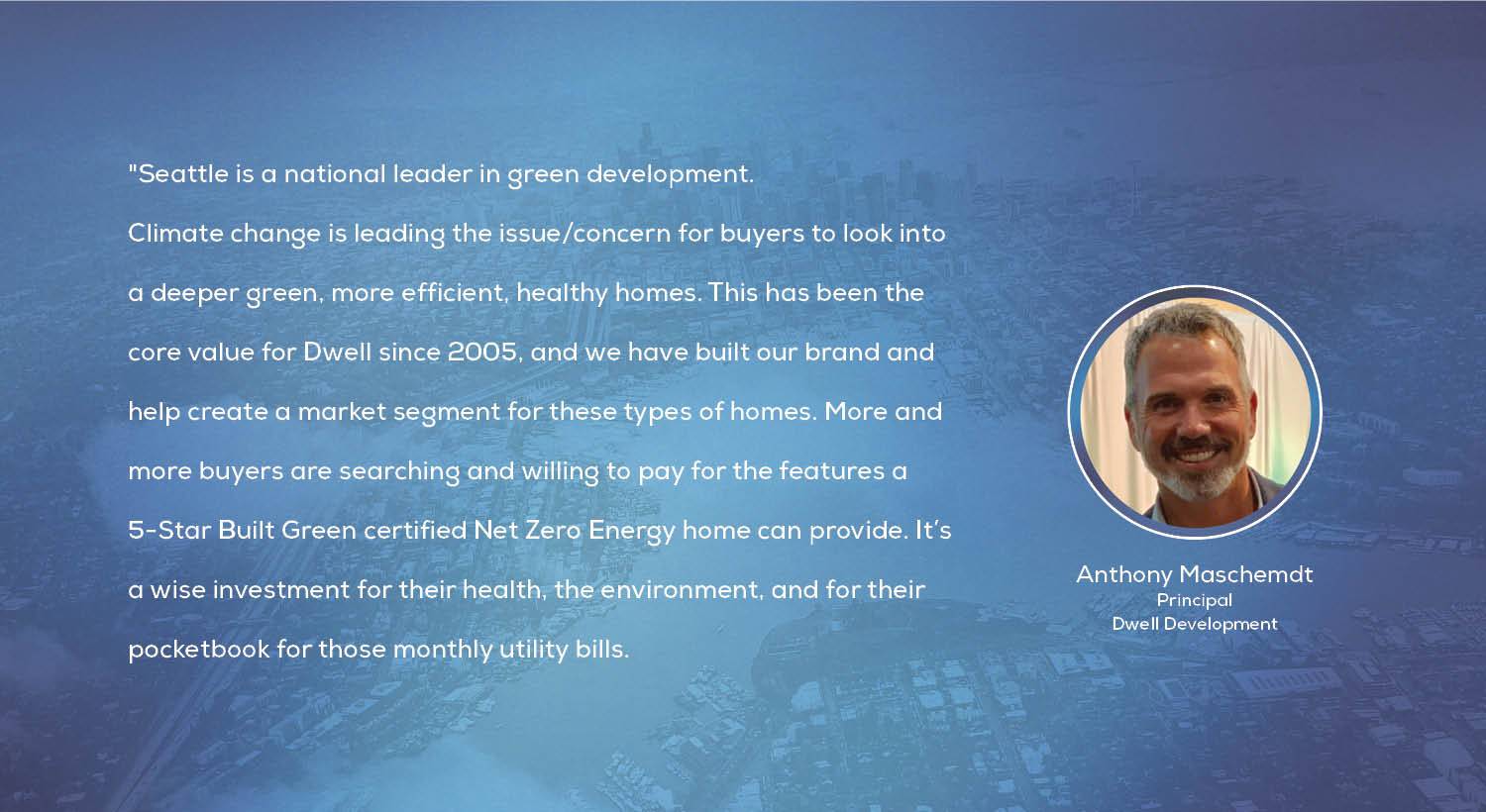

Ceremoniously hosted at the city’s storied Seattle Center, inside McCaw Hall, real estate experts and market pundits gathered for a day of networking, learning, and discussion, in the wake of a shifting housing market that started deteriorating June 2022. The Futurecast Forum followed a morning session Town Hall exclusively presented to Realogics Sotheby’s International Realty (RSIR) global real estate advisors, which featured an interview with famed restaurateur Will Guidara, and a sit-down conversation with Tammy Fahmi, Senior Vice President of Global Servicing and Strategy for Sotheby’s International Realty Affiliates, LLC.


The town hall was followed by the Futurecast Forum in the afternoon. The first panel, moderated by RSIR President and CEO Dean Jones, tackled a Market Watch of Macroeconomic, Supply and Demand, Demographics and Design Trends. Featuring Todd Britsch of Level Capital, LLC, Amy Mutal of Prevail Wealth Management LLC, Matt Van Damm of Terrene Homes, and Anthony Maschmedt of Dwell Development, their discussion focused on the market fundamentals that have dictated the shift we saw in 2022 and where it’s heading next.
There was clear consensus that the Seattle/Bellevue metro area was among the better positioned markets in the U.S. and while housing prices and sales volumes have softened, there is no sense that any more serious correction was ahead—distances today from the memory of the housing downturn that occurred at the global financial crisis and Great Recession that shocked the market in 2008 and 2009 and took several years from which to recover. Not only is the regional economy more economically diverse, but the levels of equity homeowners have built is sustained well beyond any modest price corrections. Meanwhile, the mortgage industry is reformed—while mortgage rates are higher, the industry works and there is essentially no distress such as bank-owned properties, short sales, auctions, or other dynamics that make calling bottom so inherently difficult. There are also anemic inventory levels, in part because developers are so far behind delivering new homes for sale (vs. rent) and given that would-be sellers are increasingly unwilling to let go of current homes with typical mortgage rates that are half of what they’d be upon buying another property.
Three of the panelists were contributors to the 2023 Forecast Report and expanded on the thoughts they shared there. Among one the largest concerns are how inflation and a recession if we are in one, are impacting the slowdowns in the real estate market.
For his part, Britsch who researches real estate trends primarily in the western United States, believes that while home prices continue to fall nationwide, the Puget Sound region has already seen its bottom, and is now in the process of rebounding.
While on the day of the Futurecast Forum, the Fed voted to raise rates once again, it was a question that loomed amid brokers and lenders in attendance. But many brokers agree that even as rates inch up, now was still a conversely opportunistic time for buyers to enter the market.
The builders on the first panel, Van Damm and Maschmedt expressed concern with the red tape they deal with that has made it difficult to pencil in new projects. While the market slowdown has many economic factors, the lack of housing supply in Washington continues to be a huge problem, as the supply of housing can’t keep pace with demand. Jones confirmed that the region is already 50,000 housing units shy of meeting growth goals, and at least a million new homes will need to be built to address population growth over the next 20-years, according to the most recent budget adopted by Washington State Governor Jay Inslee. These matters are further explored in the 2023 Forecast Report published by RSIR and distributed during the event.
Particular attention was paid to the matter of attainable home ownership. Clearly, the development of multi-family housing is the key, given it’s the highest density format and zoning is in place for it’s potential, in addition to the rapid expansion of ADU and DADU (Attached or Detached Auxiliary Dwelling Units) within single-family zones. Nowhere is this more evident than in downtown Seattle, which sprouted an extraordinary 27,000+ multi-family units within walking distance of each other between 2010 and 2020, making Seattle the fastest-growing large city in the U.S. The challenge, however, is 93%of this supply was built as apartments for rent, and not available for purchase. So, it’s of little surprise that Seattle now has more renters than homeowners and that trend isn’t likely to reverse unless reform takes place with legislators on condominium defect liability laws (making consumer protection so successful that it scares away would-be developers), as well as streamlining the entitlement process and even incorporating incentives. The combined headwinds mean that history is repeating itself and a dearth of new condominium supply is likely for several years ahead, meaning upward pressure on pricing.


The second panel, The Who, What, Where, Why and How We Evolve Forward as City Post Pandemic, was moderated by Brian Surratt, President and CEO of Seattle Partners, and featured President & CEO of the Seattle Convention Center Jeffery Blosser, President and CEO of the Downtown Seattle Association Jon Scholes, President of Wallace Properties Kevin Wallace, and Kelly Mann a land use attorney and Realogics Sotheby’s International Realty broker. Here the conversation focused on Seattle’s brand and its impact on the greater metro area, and the conversation explored what was likely ahead as the Emerald City polished up its facets to shine again following the darker days during the pandemic.


One of downtown’s best success stories to tell in 2023 comes from Blosser and the opening of the Seattle Convention Center Summit building. The new multi-billion-dollar expansion space provides greater opportunities to host multiple events at the same time and bring thousands of visitors and tourism both to Seattle and the region. Other successes arrayed were the new Seattle Waterfront Park and the completion of the Highway 99 tunnel amounting to and the restoration and expansion of the Climate Pledge arena. These are examples of private and public partnerships that build through a bold vision and require alignment of numerous interest groups and political will to realize, while also providing economic benefit and contributions to important social programs like expanding affordable housing. The inference pointed to new opportunities to leverage Sound Transit 3 and new “boom-burbs” of the future such as the Bel-Red corridor, for instance, where a light rail station lands squarely within a light industrial zone and low-density storage facilities and single-level retailers. Perhaps this is the future of an up-zone, just like it occurred everywhere Vancouver, BC’s SkyTrain light rail network had a station, a cluster of high-rise residential and mixed-use towers now stand.
Of course, the conversation evolved to politics and whether Seattle’s challenges are Bellevue’s advantages. While Wallace may be tempted to say yes, the reality is the two markets are two pistons in the same engine and the collective regional brand is what matters. He admits it may take a while to fill in millions of square feet of office space in downtown Bellevue in the tech titan pullback, but the greater likelihood is a flight to quality that will upgrade surrounding tenants that are going to prefer newer, urbane buildings rather than the peripheral collection of Class-B and Class-C properties and obsolete commercial office parks. Some of these developments were built 30 or 40-years ago and may be ripe for spot re-zoning and redevelopment to more current uses consistent with where the market is going next.
Surratt agreed and echoed how his own family members are visiting Seattle this summer and couldn’t be more excited pointing out that we may be overly focused on the issues, which is important but not to overlook all that is attracting business and population to be here in the first place. Urban centers are not just places to work, but important places to connect with remarkable cultural, entertainment and sporting venues, and even bedroom communities.
The Futurecast Forum wrapped up with a hosted happy hour thanks to Ste. Michelle Wine Estates, and amongst the conversations and revelations, the consensus was a new market cycle had arrived, and now guests are able to plan with perspective.


































